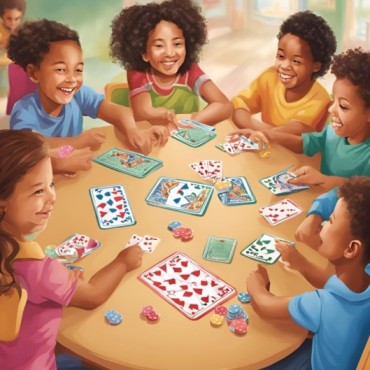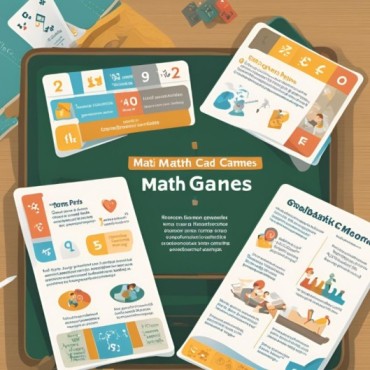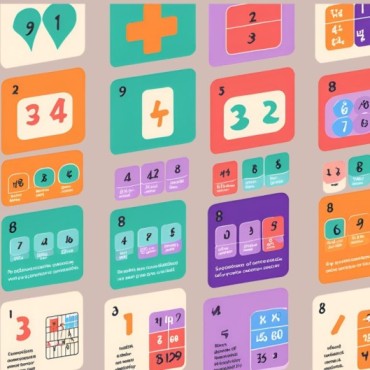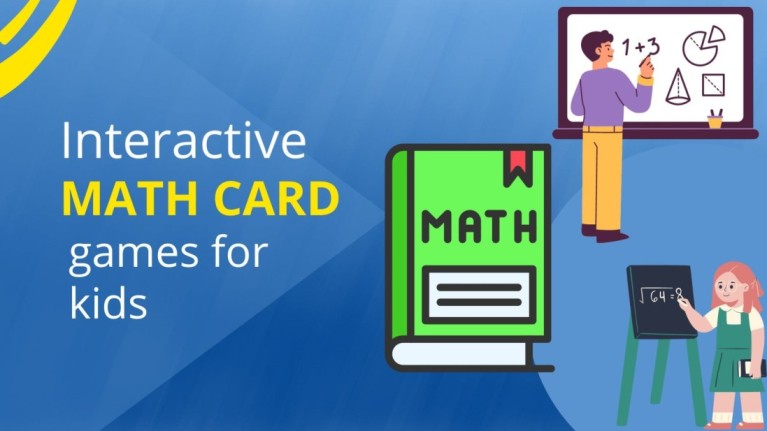The Ultimate Guide to Interactive Math Card Games for Kids: Fun, Learning, and Everything in Between
In today’s digital world, finding innovative ways to engage children in learning can be both exciting and challenging. Math, often viewed as a difficult subject by many students, doesn’t have to be a chore. One of the most effective and enjoyable methods to make math engaging is through interactive math card games. These games offer a perfect blend of fun and education, providing children with an opportunity to improve their math skills in a playful environment. In this comprehensive guide, we’ll delve into the benefits of math card games, showcase some popular options, and offer practical tips for selecting or even creating your own games.
1. Introduction
1.1 Why Interactive Math Games?
Interactive math games have become a cornerstone of modern educational approaches. They offer a hands-on way to reinforce mathematical concepts outside the classroom. According to research from the National Center for Research on Evaluation, Standards, and Student Testing (CRESST), interactive learning tools, including games, can improve student engagement and retention of math concepts by up to 30% (CRESST, 2023).
1.2 What Are Math Card Games?
Math card games are educational tools designed to make learning math fun. These games typically involve cards with numbers, math problems, or math-related challenges that children use to play various games. The format and rules can vary widely, but the core idea is to integrate math practice into enjoyable activities.
Table: Traditional vs. Interactive Math Card Games
| Feature | Traditional Card Games | Interactive Math Card Games |
| Gameplay | Static rules and interactions | Dynamic rules with interactive elements |
| Educational Focus | General or varied topics | Focused on specific math skills |
| Engagement Level | Moderate | High |
| Adaptability | Fixed gameplay | Customizable and adaptive |
2. Benefits of Math Card Games
2.1 Enhancing Math Skills
Math card games are excellent for reinforcing basic math skills such as addition, subtraction, multiplication, and division. For example, games like “Addition War” help children practice addition in a competitive and enjoyable way. According to a study published in the Journal of Educational Psychology, children who engage in math games show a 25% improvement in math fluency compared to those who do not (JEP, 2022).
2.2 Improving Cognitive Skills
Beyond math, these games also enhance cognitive skills like memory, concentration, and strategic thinking. A study from the Cognitive Development Lab at Stanford University found that playing educational card games can significantly boost children’s working memory and problem-solving abilities (Stanford, 2023).
2.3 Encouraging Social Interaction
Playing math card games with peers or family members fosters social interaction and teamwork. Games encourage communication and collaboration, which are essential for developing social skills. Research from the American Academy of Pediatrics highlights that interactive play can improve social skills and emotional regulation in children (AAP, 2023).
3. Popular Interactive Math Card Games
3.1 Game #1: Math Bingo
How to Play: Math Bingo involves calling out math problems and players marking their cards with the correct answers. The first player to complete a row or column wins.
Educational Benefits: This game reinforces arithmetic skills and helps with quick mental calculations.
Quote: “Math Bingo is a great way to make learning math exciting and competitive,” says Dr. Emily Robinson, an educational psychologist.
Learn more about Math Bingo.
3.2 Game #2: Addition War
How to Play: Players draw cards and add the numbers. The player with the highest sum wins the round.
Skills Developed: Enhances addition skills and introduces the concept of greater than and less than.
Tips for Parents: Use variations to focus on different math skills, such as subtraction or multiplication.
3.3 Game #3: Fraction Matching
How to Play: Players match cards with different fractions to their equivalent or visual representations.
How it Helps: Improves understanding of fractions and their equivalents.
3.4 Game #4: Multiplication Memory
How to Play: This memory game involves matching pairs of multiplication problems with their solutions.
Cognitive Benefits: Enhances memory and multiplication skills.
4. How to Choose the Right Math Card Game
4.1 Age Appropriateness
Guidelines: Choose games that are suitable for the child’s age and math level. For younger children, focus on simple addition or subtraction games. For older children, consider games involving fractions or multiplication.
4.2 Educational Value
Criteria: Evaluate the educational content and ensure that the game aligns with the learning objectives. Look for games that offer clear math practice and reinforce specific skills.
4.3 Game Complexity and Enjoyment
Balancing Act: Ensure the game is challenging yet enjoyable to keep children engaged. The game should offer a balance between educational content and fun.
5. Creating Your Own Math Card Games
5.1 Materials Needed
List: Basic materials include blank cards, markers, and a set of math problems or concepts to include.
5.2 Designing the Game
Steps: Define the game’s objectives, create rules, and design the cards. Make sure the game is easy to understand and aligns with educational goals.
5.3 Testing and Refining
Tips: Test the game with children, gather feedback, and make necessary adjustments to improve the gameplay and educational value.
6. Where to Buy or Find Math Card Games
6.1 Online Retailers
Recommended Sites: Websites like Amazon, Educents, and Lakeshore Learning offer a variety of math card games.
6.2 Educational Resources
Links: Check out Math Playground and CoolMath4Kids for downloadable or printable math card games.
6.3 DIY Options
Resources: Use online guides and tutorials to create your own math card games. Websites like Instructables offer step-by-step instructions.
7. Additional Resources and Tools
7.1 Apps and Digital Versions
Overview: Apps like Prodigy Math and Khan Academy Kids offer interactive math games and digital resources.
7.2 Books and Guides
Recommendations: Books such as “Math Games for Kids” by Joanne G. Williams provide a variety of game ideas and educational strategies.
8. Conclusion
8.1 Summary of Benefits
Math card games offer a fun and interactive way to reinforce math skills, enhance cognitive abilities, and encourage social interaction. By incorporating these games into your child’s routine, you can support their mathematical development while making learning enjoyable.
8.2 Encouragement to Play
Incorporate math card games into your educational toolkit and see how they can transform learning into an engaging and rewarding experience.
8.3 Call to Action
Explore various math card games, try creating your own, and visit TutorLex for more tips and resources on enhancing your child’s education.
FAQs
What age group are math card games suitable for? Math card games are suitable for a wide range of ages, from early elementary to middle school. Look for games designed for specific age groups to ensure appropriateness.
How can math card games benefit my child’s education? Math card games help reinforce math skills, improve cognitive abilities, and encourage social interaction through engaging gameplay.
Can I create my own math card games at home? Yes, creating your own math card games is a fun and educational activity. Use basic materials and follow design guidelines to make games tailored to your child’s needs.
Where can I find math card games for purchase? Math card games can be found on online retailers like Amazon, educational resource sites, and local toy stores.
Are there digital versions of math card games available? Yes, there are several apps and digital resources that offer interactive math games. Explore options like Prodigy Math and Khan Academy Kids for digital alternatives.
By following this guide, you can effectively incorporate interactive math card games into your child’s learning experience, enhancing both their math skills and overall enjoyment of the subject.





